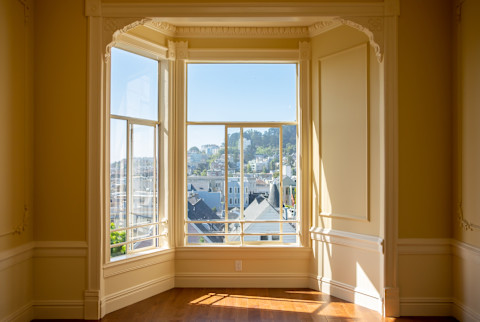Want To Make Your Home More Sustainable? 3 Places To Get Started

While sustainable living strategies might vary some geographically, commonalities exist in residential building practices. From heating and cooling to windows, doors, insulation, fixtures, and new materials, creating a sustainable home is totally possible—no matter your locale.
First, what exactly is a sustainable home?
There are actually a few ways a home can be sustainable. A space can be environmentally sustainable (or "green"), socially sustainable (designed with safety, security, and comfort in mind), and/or economically sustainable (designed to save money both during construction and throughout the life cycle of the home).
Homing in on environmentally sustainable structures, the World Green Building Council says a green building is one that reduces or eliminates negative impacts in its design, construction, or operation while creating positive impacts on our climate and natural environment.
The council also notes different countries and regions will have a variety of characteristics that shape their approach to green building—such as distinctive climatic conditions, unique cultural traditions, diverse building types, etc. The U.S. Green Building Council, for example, uses LEED (Leadership in Energy and Environmental Design) certification to help design and construct more sustainable homes.
Ready to get started with your eco-home? Here are three approaches that can get you on the journey to a more environmentally sustainable space.
3 ways to create a sustainable home:
Find the right materials.
The right materials can ultimately drive down the long-term cost of a home and drive up its energy efficiency. According to the Building Designers Association of Australia, all materials have an embodied energy—the energy used over their life cycle, from processing and manufacturing through product delivery. A poor choice of energy-intensive materials can diminish the benefit of all your other sustainable living choices.
Some examples that ultimately are healthier for the environment include recycled steel, reclaimed or recycled wood, recycled rubber, recycled plastic, bamboo, AshCrete, hempcrete, timbercrete, enviroboard, and clay brick, to name a few.
Consider renewable energy options.
Did you know that the average monthly electric bill in the U.S. is $117? A renewable energy system can help supply some, or all, of your electricity needs, and bring your bill down over time. These options include solar systems, wind systems, microhydropower systems, and hybrid systems that include both solar and wind.
In planning for a home renewable energy system, the U.S. Department of Energy suggests analyzing electricity loads, identifying local codes and requirements for small renewable energy systems, and then choosing the right renewable energy technology. When looking specifically at solar, the most popular home option, the DOE suggests seven steps:
- Investigate your home's energy efficiency.
- Assess your solar potential and limitations.
- Assess your options for going solar.
- Estimate your solar electricity needs.
- Obtain bids and site assessments from contractors.
- Understand available financing and incentives.
- Work with your installer and utility to install the system and set up agreements.
Have fun investigating new innovations.
New inventions for sustainable living continue to come to market. Consider a recent example from Berkeley Lab: sunlight-reflecting "cool walls" that have been shown to reduce energy costs by lowering heat gain in buildings. Peer-reviewed research1 by the University of Southern California and Berkeley Lab found that reflective walls could lower urban air temperature much like reflective "cool roofs."
The idea is to surface exterior walls with a solar-reflective paint or cladding. Reflecting sunlight out of the city reduces urban heat. To qualify for the LEED pilot credit, buildings must cover 75% of their exterior with a cool wall material that reflects at least 60% of sunlight, among other specifications.
The concept has new support from the U.S. Green Building Council, which has issued a pilot credit for the installation of cool exterior walls in new homes, schools, and commercial buildings to mitigate urban heat islands.
Another example of an innovation that could help lead to more sustainable living at home involves drip irrigation systems. The University of Rhode Island promotes drip irrigation as an efficient and economical way to water yards and gardens.
Unlike sprinklers that are only 65% to 75% efficient, drip irrigation proves 90% efficient for watering plants, according to the university. Drip irrigation applies the water slowly at the plant root zone, and this more targeted approach reduces runoff and evaporation. Other benefits include reducing plant disease; saving time, money, and water; and decreasing labor, among others.
The bottom line.
Sustainable design preserves our natural resources and improves our quality of life—and it's becoming easier to implement at home by the day.
